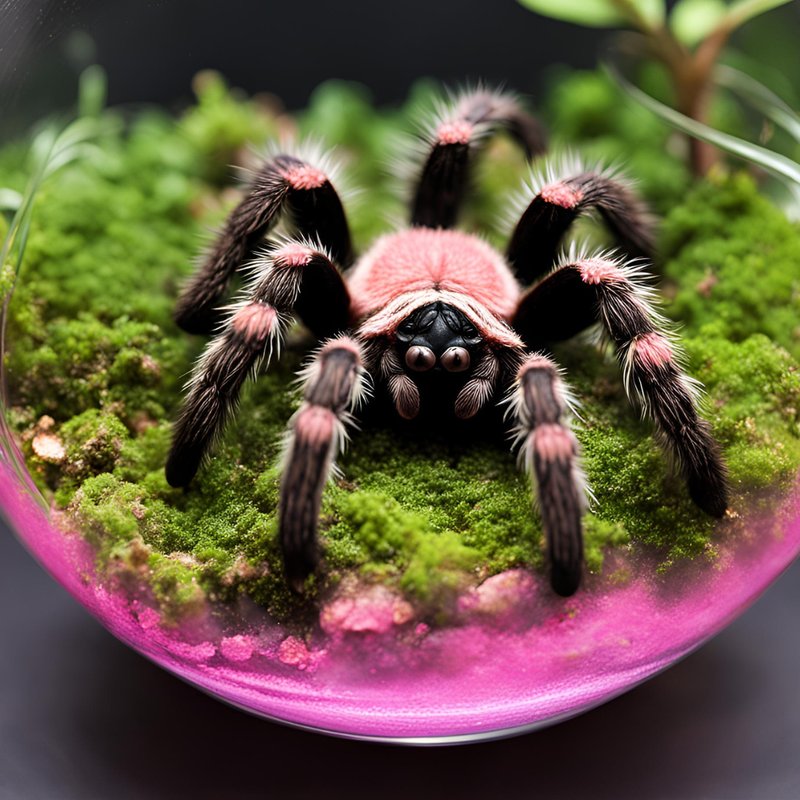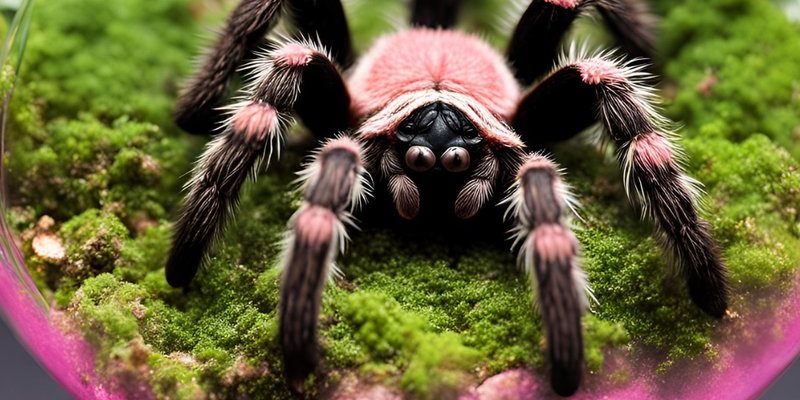
In the world of pet spiders, the lifespan of a pink toe tarantula can vary based on several factors, including care, environment, and even gender. Generally, these spiders can live a long time—some even reach up to 10 years or more with proper care. So, let’s dive deeper into what influences their lifespan and how you can help them thrive in your care.
The Lifespan of a Pink Toe Tarantula
Most pink toe tarantulas can live between 7 to 10 years in captivity. This might sound surprising, especially if you think all spiders have short life spans. But these lovely creatures can actually become long-term companions. In the wild, their lifespan tends to be shorter due to predators and environmental dangers. However, in a safe, controlled environment like your home, they can thrive much longer.
Captive vs. Wild Lifespan
In the wild, various factors can cut their life spans short. Predators, food scarcity, and environmental stresses are just a few challenges they face. In captivity, though, you provide them with a safe haven, which contributes to their longevity. You’re in charge of their diet, habitat, and health, all of which play vital roles in how long they live.
It’s also interesting to note that female pink toe tarantulas tend to live longer than males. While females can often reach the upper end of that 10-year range, males might only live 5 to 7 years. Why the difference? Males generally have more stressful lives, as they spend their time searching for mates, which can shorten their time on earth.
The lifespan of your pink toe tarantula isn’t just about age; it’s significantly affected by care and environment. Here are some critical factors to consider:
Diet and Nutrition
Just like any pet, a proper diet is essential for the health of your pink toe tarantula. They typically eat a variety of insects, including crickets and roaches. Make sure the food you provide is appropriately sized—too large can be a choking hazard, while too small won’t nourish them well.
Feeding Tips:
- Feed them live insects to encourage natural hunting behavior.
- Consider gut-loading the insects before feeding. This means feeding the insects a nutritious diet before they become a meal.
- Don’t overfeed. A pink toe tarantula might eat once or twice a week, depending on its size.
If you’re providing proper nutrition, you’ll likely see better health and a longer life from your tarantula.
Habitat Conditions
Creating the right habitat is another crucial aspect of ensuring a long life for your pink toe tarantula. They thrive in warm, humid environments, which mimic their natural habitat in the rainforests.
Key Habitat Elements:
- Temperature: Maintain a temperature between 75°F and 85°F.
- Humidity: Keep humidity levels around 70% to 80%.
- Enclosure size: Provide an enclosture that offers both horizontal and vertical space for climbing.
If their home isn’t right, they can stress out, leading to health issues that may shorten their life.
Growth Stages of a Pink Toe Tarantula
Understanding how your pink toe tarantula grows can also help you gauge its lifespan. They go through several growth stages, starting from an egg to a mature adult.
Juvenile Stage
Initially, when they hatch, they are quite small and vulnerable. This juvenile stage usually lasts until they reach about one year of age. During this time, they grow quickly and may molt several times, shedding their exoskeleton to accommodate their growing bodies.
In their juvenile stage, they require a bit of extra care. Make sure to monitor their molting process; if they struggle, it can lead to complications. A healthy molting means they are growing and progressing toward adulthood.
Adult Stage
Once they reach adulthood, around 2 to 3 years old, their growth slows down significantly. During this stage, you’ll notice their colors becoming more vibrant, and they’re often more active. This is when their maximum lifespan potential really kicks in.
As adults, their main focus is finding mates, and this can be stressful, especially for males. During this period, your role is to ensure they are still receiving the right diet and environmental conditions to thrive.
Signs of a Healthy Pink Toe Tarantula
To make sure your pink toe tarantula lives a long, healthy life, look out for signs of good health.
Physical Appearance
A healthy pink toe tarantula will have vivid colors and a plump body. If you notice dull colors, a shriveled appearance, or lethargy, it might be time to check their habitat and diet.
Common Signs of Health:
- Bright coloration
- Active behavior, especially during feeding times
- Regular molting without complications
Maintaining your spider’s well-being is key to ensuring it reaches its maximum lifespan.
Behavioral Signs
Changes in behavior can also indicate health issues. If your tarantula is hiding more than usual or isn’t eating, it’s a good idea to reassess its environment. Stress can be a silent life-shortener.
Here’s the thing: knowing your tarantula’s typical behavior will allow you to spot changes quickly.
So, how long does a pink toe tarantula live? With proper care, they can easily reach 7 to 10 years! By understanding their needs in terms of diet, habitat, and overall health, you can help them thrive for as long as possible. Remember, they’re not just creatures in a tank; they can be fascinating companions that bring joy into your life.
Taking the time to learn about their growth stages and health signs will not only ensure they live longer but also enrich your experience as a pet owner. Caring for a pink toe tarantula can be a rewarding journey, and knowing how to provide the best for them makes it all the more worthwhile.

